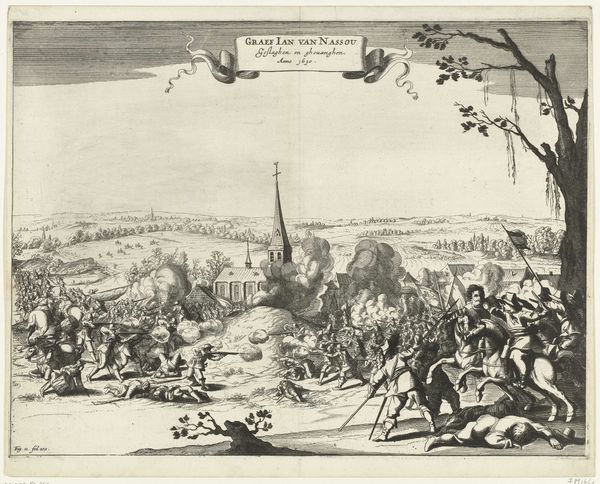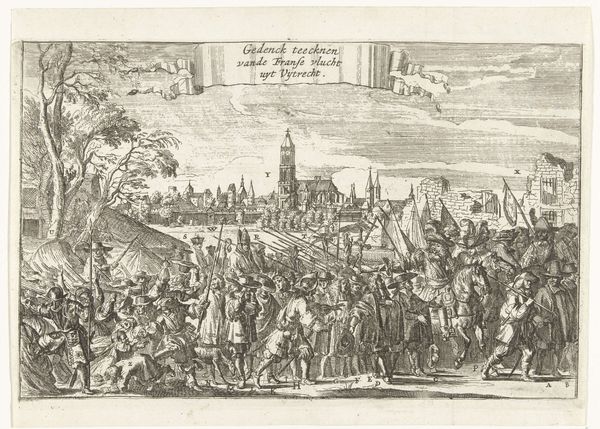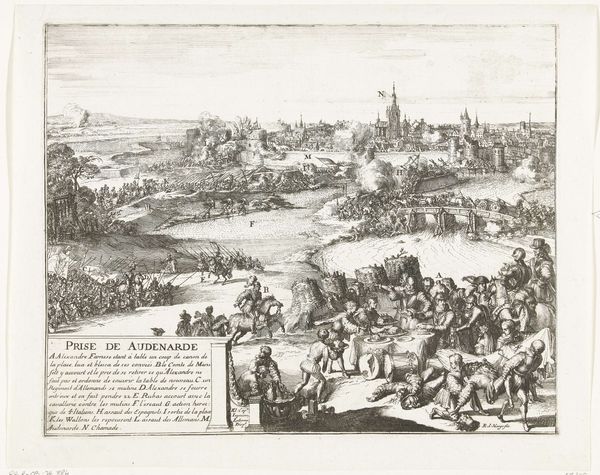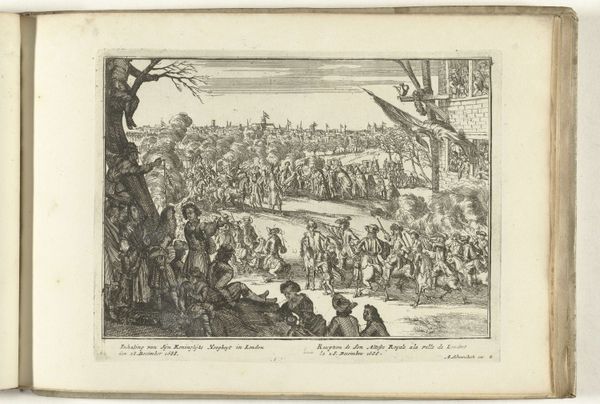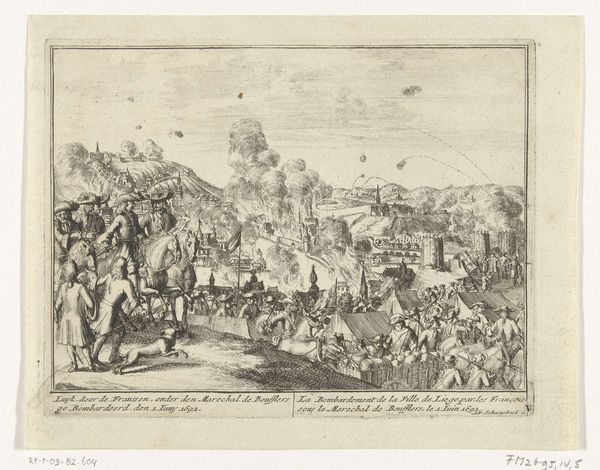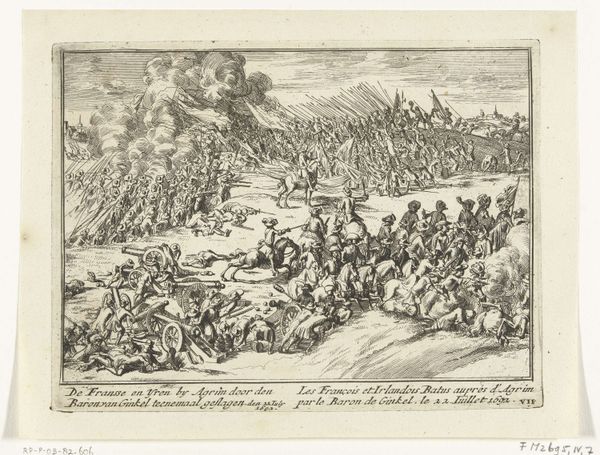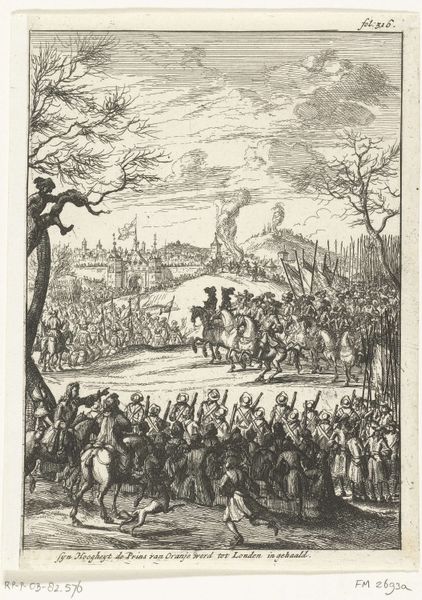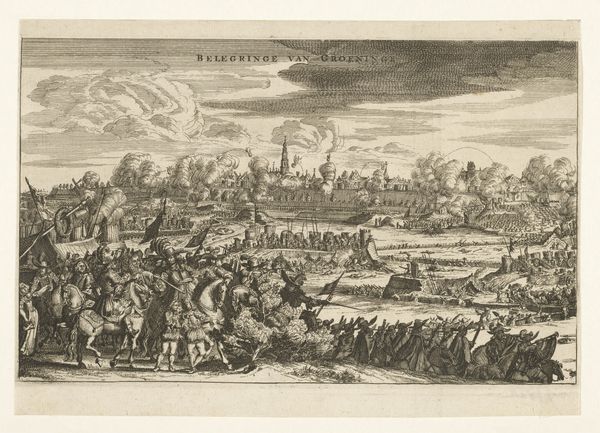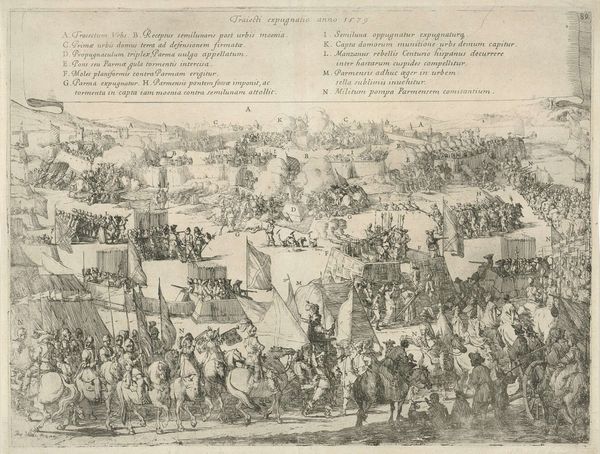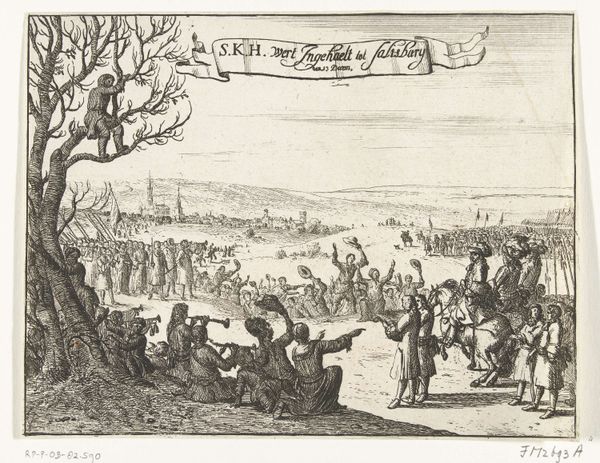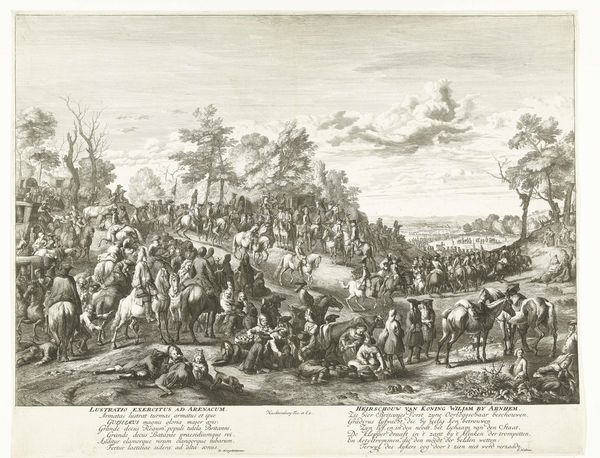
print, etching, engraving
#
baroque
#
pen drawing
#
dutch-golden-age
# print
#
etching
#
asian-art
#
landscape
#
genre-painting
#
history-painting
#
engraving
Dimensions: height 196 mm, width 298 mm
Copyright: Rijks Museum: Open Domain
Curator: This etching from 1675 depicts "Dutch representatives appear before Koxinga". Editor: My first impression is one of formality despite the exotic setting, which speaks volumes. The linear composition almost feels theatrical, but laden with symbolism. Curator: Indeed, it’s a scene of diplomacy under duress. Koxinga, the Ming dynasty loyalist, ousted the Dutch from Taiwan in 1662. This print is interesting as a piece of Dutch Golden Age art due to its engagement with a historical event and an act of empire, rendered from a European perspective. Editor: It is compelling that the landscape feels both stylized and functional. The palms are icons of the faraway "exotic East", but they also define the setting of a historic negotiation that carries strong psychological undertones of domination, defeat, and uncertainty. I notice Koxinga is positioned almost religiously in a canopied pavilion. What is the symbolic weight? Curator: Koxinga's positioning suggests a ruler receiving tribute. The scene constructs a visual narrative of power relations; we observe the defeated Dutch seeking terms from Koxinga. It's crucial to recognize that these kinds of images shaped public opinion, fostering particular viewpoints of colonial encounters. Editor: And observe how the spears create vertical lines through the horizontal of the landscape. Such rigid geometry, along with the arrangement of the crowd and tent suggests ideas of power, rank, and ceremony. In that regard, Koxinga looks less like a person and more like an ideal: unmovable and supreme. It has a monumental effect, even though it is on a small scale. Curator: It's fascinating how printed images like this one helped solidify an emerging Dutch national identity alongside their trade dominance in the seventeenth century. Representations of foreign cultures and diplomatic successes abroad became ingrained aspects of Dutch culture at home. Editor: And by analyzing how such symbols and imagery are mobilized, we start to unpack what historical power actually looked and felt like. These depictions, laden with symbolism, reflected both political events and profound shifts in cultural attitudes toward people deemed ‘other.’ Curator: Exactly. Through it, we gain invaluable insight into the narratives and imagery of historical colonialism. Editor: I find its complex intersection of cultures and embedded perspectives quite potent and it highlights how historical illustrations function both as documentation and interpretation of a place and its people.
Comments
No comments
Be the first to comment and join the conversation on the ultimate creative platform.
